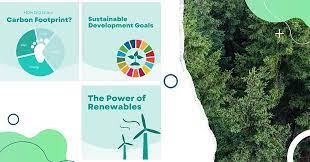
India Will Become Third-Largest Economy By 2027: India is on track to become the world’s third largest economy by 2027, surpassing Japan and Germany, and have the third largest stock market by 2030, thanks to global trends and key investments the country has made in technology and energy, says Morgan Stanley. It further stated that India’s gross domestic product (GDP) will grow from the current $3.4 trillion to $8.5 trillion over the next 10 years.
November 2022 Current Affairs Quiz
“Incrementally, India will add more than $400 billion to its GDP every year, a scale that is only surpassed by the US and China,” Morgan Stanley’s chief Asia economist Chetan Ahya wrote in Financial Times.
What The M-S Said:
“We believe India is set to surpass Japan and Germany to become the world’s third-largest economy by 2027 and will have the third-largest stock market by the end of this decade,” says Ridham Desai, Morgan Stanley’s Chief Equity Strategist for India. “Consequently, India is gaining power in the world order, and in our opinion these idiosyncratic changes imply a once-in-a-generation shift and an opportunity for investors and companies.”
Global Offshoring Creates a Workforce for the World: More Employment Opportunity:
Companies around the world have been outsourcing services such as software development, customer service and business process outsourcing to India since the early days of the Internet. Now, however, tighter global labor markets and the emergence of distributed work models are bringing new momentum to the idea of India as the back office to the world.
“In a post-Covid environment, CEOs are more comfortable with both work from home and work from India,” says Desai. In the coming decade, he notes, the number of people employed in India for jobs outside the country is likely to at least double, reaching more than 11 million, as global spending on outsourcing swells from $180 billion per year to around $500 billion by 2030.
India’s Share of Manufacturing is expected to increase to 21% of GDP by 2031:
India is also poised to become the factory to the world, as corporate tax cuts, investment incentives and infrastructure spending help drive capital investments in manufacturing.
“Multinationals are now buoyant about the prospects of investing in India, and the government is helping their cause by investing in infrastructure as well as supplying land for building factories,” says Upasana Chachra, Chief India Economist. Morgan Stanley data shows that multinational corporations’ sentiment on the investment outlook in India is at an all-time high. By 2031, manufacturing’s contribution to India’s GDP might rise from 15.6% to 21%, doubling the country’s export market share.
Digitalization, Credit and the Consumer:
India began laying the foundation for a more digital economy more than a decade ago with the launch of a national identification program called Aadhaar. The system creates biometric IDs to establish proof of residence and has been instrumental in digitizing financial transactions, among other benefits.
This initiative is now part of IndiaStack, a decentralized public utility offering a low-cost comprehensive digital identity, payment and data-management system. “IndiaStack is likely to lead to a massive change in how India spends, borrows and accesses healthcare,” says Desai.
About The Consumers:
Indian consumers are also likely to have more disposable income. India’s income distribution could flip over the next decade, and consequently overall consumption in the country could more than double from $2 trillion in 2022 to $4.9 trillion by the end of the decade—with the greatest gains going to non-grocery retail, including apparel and accessories, leisure and recreation, and household goods and services, among other categories.





